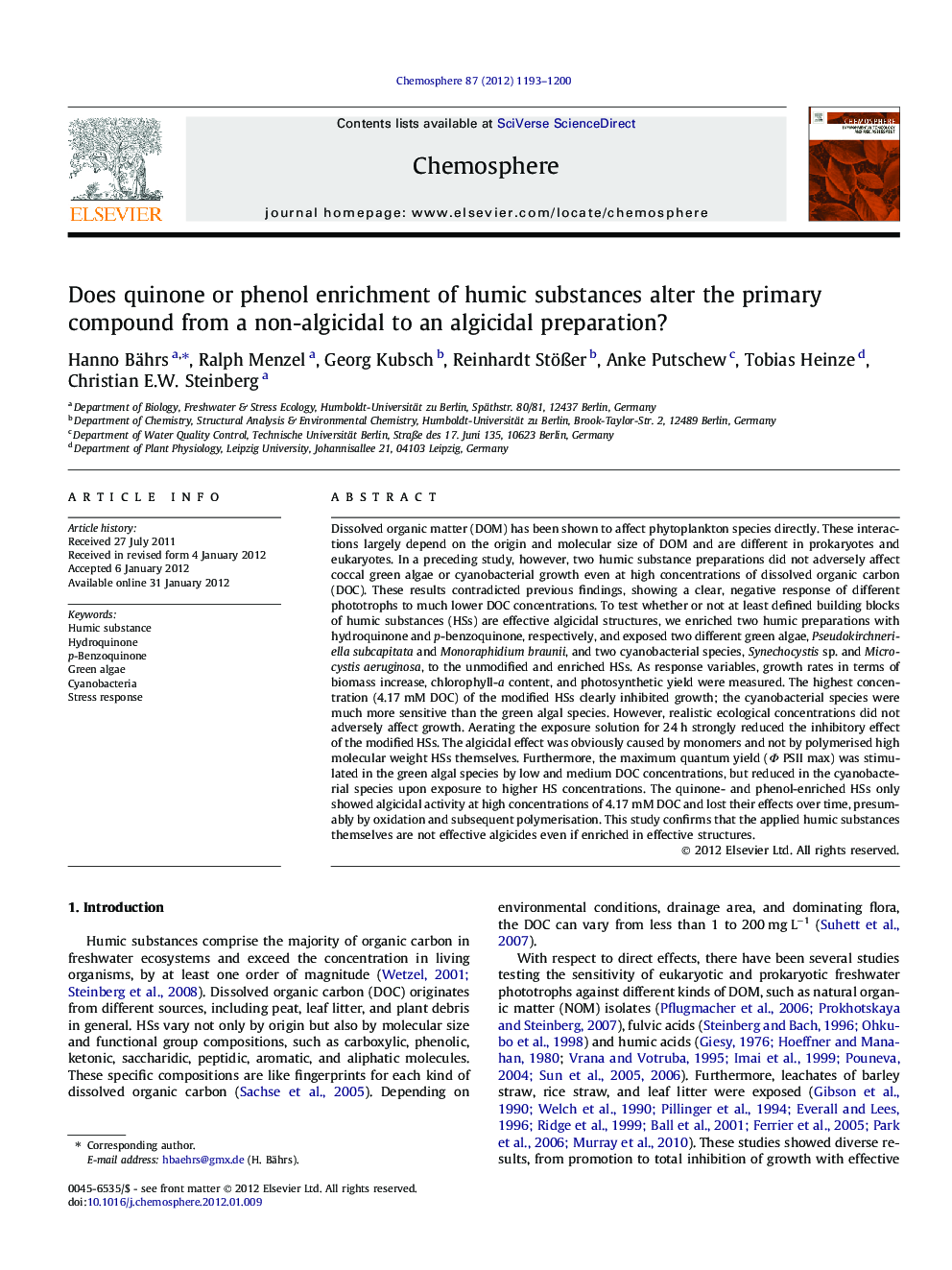| کد مقاله | کد نشریه | سال انتشار | مقاله انگلیسی | نسخه تمام متن |
|---|---|---|---|---|
| 4409712 | 1307502 | 2012 | 8 صفحه PDF | دانلود رایگان |

Dissolved organic matter (DOM) has been shown to affect phytoplankton species directly. These interactions largely depend on the origin and molecular size of DOM and are different in prokaryotes and eukaryotes. In a preceding study, however, two humic substance preparations did not adversely affect coccal green algae or cyanobacterial growth even at high concentrations of dissolved organic carbon (DOC). These results contradicted previous findings, showing a clear, negative response of different phototrophs to much lower DOC concentrations. To test whether or not at least defined building blocks of humic substances (HSs) are effective algicidal structures, we enriched two humic preparations with hydroquinone and p-benzoquinone, respectively, and exposed two different green algae, Pseudokirchneriella subcapitata and Monoraphidium braunii, and two cyanobacterial species, Synechocystis sp. and Microcystis aeruginosa, to the unmodified and enriched HSs. As response variables, growth rates in terms of biomass increase, chlorophyll-a content, and photosynthetic yield were measured. The highest concentration (4.17 mM DOC) of the modified HSs clearly inhibited growth; the cyanobacterial species were much more sensitive than the green algal species. However, realistic ecological concentrations did not adversely affect growth. Aerating the exposure solution for 24 h strongly reduced the inhibitory effect of the modified HSs. The algicidal effect was obviously caused by monomers and not by polymerised high molecular weight HSs themselves. Furthermore, the maximum quantum yield (Φ PSII max) was stimulated in the green algal species by low and medium DOC concentrations, but reduced in the cyanobacterial species upon exposure to higher HS concentrations. The quinone- and phenol-enriched HSs only showed algicidal activity at high concentrations of 4.17 mM DOC and lost their effects over time, presumably by oxidation and subsequent polymerisation. This study confirms that the applied humic substances themselves are not effective algicides even if enriched in effective structures.
► Humic substances (HSs) had minor or even no direct effects on phototrophs.
► Algicidal effects can be linked to HS building blocks, such as quinonoid moieties.
► Cyanobacteria are much more sensitive to these building blocks than green algae.
► Ageing is a key parameter in modulating the algicidal potency of quinonoid moieties.
Journal: Chemosphere - Volume 87, Issue 11, June 2012, Pages 1193–1200